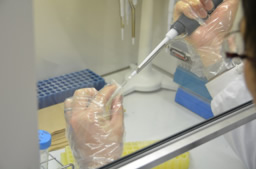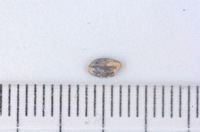Members
TANAKA, Katsunori
 Associate Professor, Faculty of Humanities, Hirosaki University
Associate Professor, Faculty of Humanities, Hirosaki University

- [Specialization]
- Plant Genetics
- [Research in the past]
- To consider historical rice cultivation, such as rice domestication, post-domesticated improvements, and transmission of rice cultivation, DNA analysis is applied to rice remains, mainly in Japan. Plant genetics and ethnobotanical studies are also conducted for researching the establishment event of the Japanese melon landrace.
- [My role in this research]
- My research proposes to reveal how rice cultivation has developed to paddy field cultivation, tracing the domestication of the crop from the original wild rice found around the lower Yangtze River. For research such as rice domestication research from wild rice to cultivated rice, research on cultivated rice in ancient times, and phylogenetic relationships between ancient rice and modern rice, DNA analysis is applied to rice seed remains. Melon seed remains are also analyzed as an example of the recovery of vegetables that were utilized in ancient times.
- [Major methodology: Ancient DNA analysis]
 DNA analysis of the seed remains of rice and melons is important for retrieving information on how rice has improved from ancient times to modern. However, the recovery of DNA from seed remains is difficult because of DNA fragmentation through deterioration. Ancient DNA analysis is a technique for the recovery of DNA and for performing sequencing.
DNA analysis of the seed remains of rice and melons is important for retrieving information on how rice has improved from ancient times to modern. However, the recovery of DNA from seed remains is difficult because of DNA fragmentation through deterioration. Ancient DNA analysis is a technique for the recovery of DNA and for performing sequencing.

- [Achievements concerned to this field]
- Tanaka, K. (2013) Ine no Shushi no Keijo to DNA-bunseki, sono-Torikumi to Mondai-ten [Morphological and DNA analysis in rice seed remains, current research situation and problem]. In: Sato Y-I., Akasaka N. (eds.) Field Kagaku no Iriguchi, Ine no Rekishi wo saguru [Introductory book of field science, Research for rice cultivation history], Tamagawa Daigaku Shuppan-bu, Tokyo, 209-222
Tanaka, K., Kamijo, N. (2015) Morphological and DNA analysis for rice seed remains, vol. II, Research report of the Research Project for Effective Utilizations of Archaeological Remains, Archaeological Research Center for Northern Japan, Hirosaki University, Hirosaki, p. 332
Tanaka, K., Kamijo, N., Tabuchi, H., Hanamori, K., Matsuda, R., Suginomori, J., Sato, Y.-I., Udatsu, T., Ishikawa, R. 'Morphological and molecular genetics of ancient remains and modern rice (Oryza sativa) confirm diversity in ancient Japan', "Genetic Resources and Crop Evolution", doi: 10.1007/s10722-015-0262-2, 2015年
Tanaka, K., Stevens, C.J, Iwasaki, S., Akashi, Y., Yamamoto, E., Dung, T.P, Nishida, H., Fuller, D.Q, Kato, K. 'Seed size and chloroplast DNA of modern and ancient seeds explain the establishment of Japanese cultivated melon by introduction and selection', "Genetic Resources and Crop Evolution", doi:10. 1007/s10722-015-0314-7, 2015年


 Associate Professor, Faculty of Humanities, Hirosaki University
Associate Professor, Faculty of Humanities, Hirosaki University
 DNA analysis of the seed remains of rice and melons is important for retrieving information on how rice has improved from ancient times to modern. However, the recovery of DNA from seed remains is difficult because of DNA fragmentation through deterioration. Ancient DNA analysis is a technique for the recovery of DNA and for performing sequencing.
DNA analysis of the seed remains of rice and melons is important for retrieving information on how rice has improved from ancient times to modern. However, the recovery of DNA from seed remains is difficult because of DNA fragmentation through deterioration. Ancient DNA analysis is a technique for the recovery of DNA and for performing sequencing.